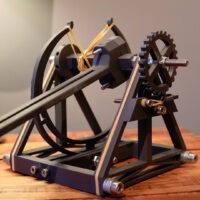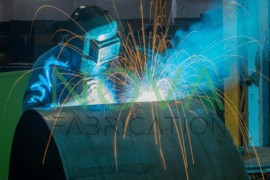3D printers (people) have a bad habit of wasting their print improvement effort on the shiny and new instead of the useful. I get it, I do. 3D printers (machines) are cool, and it’s fun to make them look cool. A big part of the fun is customizing and talking shop about mods. We spend days designing and printing “upgrades” whose only real utility is matching color schemes or, at best, hiding the sound activated LED lighting.
Yes, it’s cool that 3D printers (machines) can print their own parts–they’re like living, growing organisms–but some folks are obsessed with this, taking it to the extreme in the name of independence and/or frugality. Others take the opposite approach, throwing money at fancy nozzles, touch panels, or home/office additions with the idea that this is the path to consistent quality.
Have you thought though, that perhaps the best way to up your print game isn’t by modifying your hardware at all, but by better understanding the software that controls it?
3D Printing Slicer Software (The Race Car Driver)
Slicer software. What is it anyway? The cutting edge algorithm behind automated, perfectly paper-thin deli meats? The artificial intelligence used in amoral cyborg ninjas? Maybe. But the slicer software I am referring to is the kind that translates 3D models to a language understood by FDM printers (machines). Slicer software is what converts the faceted solid model (STL) into layers and into G-code for printing on your FDM printer.
The 3D printer (machine) is a beautiful, wonderful and yet also totally dumb machine. It does what it’s told. If instructed, (or sometimes for no apparent reason), it will go to a fixed point in space and endlessly ooze out a mountain of useless, curly waste. The 3D printer (machine) is also like a race car, a finely tuned machine. The Slicer is like the race car driver, deftly controlling the machine. No winning team focuses on just one and not the other. You’re welcome for that perfect analogy.
Can My Benchy Get a Slicer?
Currently, there is a glut of slicer programs available. We have (to name a few): 3DPrinterOS, Astroprint, CraftWare, Cura, IceSL, ideaMaker, KISSlicer, MakerBot Print, MatterControl, Netfabb, OctoPrint, Repetier, SelfCAD, Slic3r, SliceCrafter, Tinkerine and Z-Suite *deep breath*. A rising tide raises all Benchies, as the saying (I just created) goes.
But with all the options, where do you start? If you’re new, start with the most basic and integrated slicer option. This is probably the slicer recommend by the printer manufacturer and is, in some cases, made by the same manufacturer. For discerning SolidSmack readers, you’ll want the maximum feature set for ultimate control and leverage of your printer’s (person and machine) capabilities.
One slicer consistently comes out ahead on features and print quality. So, I went deep to peel back the functionality, layer by layer, of…
Simplify3D
The UI/UX and features of slicing software is as varied as the amount of slicer software available. I’ll take a quick look at the features that set Simplify3D apart, but also at what makes it an exceptional experience for the 3D printer (person). Let’s start, where you start.
The Import
The imported STL models fall from the top of the screen in a delightful way. (Analogy: Anvil falling on poop – in a good way?) With the wide array of 3D printers that Simplify3D supports (more than any other software, 500+ and counting!), there’s an equally wide array of 3D file formats. That is, you’re not just limited to STL. You also have the option to import OBJ and 3MF.
Added Value: $3.01
Super Cool Feature #1: Dense Support Layers
Dense support layers switch the support structure from a sparse support density to a compact support density as the layer level gets close to the overhang of the model. The philosophy is simple, increase the density only where it matters and right next to the model where it impacts the models surface finish (the rest is wasted material). Why? Exotic support materials like PVA are expensive. Time = Material = Money in the 3D printing game. Me? I often print parts in an orientation that is very inefficient from a supports perspective but will produce the best cosmetic results. For volume duplicate prints, as with direct digital manufacturing, the savings are compounded.
Added Value: $111.32
Super Cool Feature #2: Variable Settings
As a self-professed 3D printing whiz kid and creative visionary, I’m ashamed (in hindsight) at how blissfully unaware I was of such useful and obvious functionality. Basically, the norm is to create a setting based around the portion of a model with the most complex requirements and then print the entire model with that setting. That could mean using a very fine layer resolution or dense infill for an entire print when only a small section demands it. That’s like driving the enforced speed limit of a short city block for an entire road trip. Variable settings allow for defining different parameters (processes) for different sections of the print. Optimizing for multiple parameters, detail, and strength while minimizing material consumption and maximizing printer utilization. Because, my friends, compromise is the worst.
Super Cool Feature #3: Saved Processes
I have a handful of generic setting profiles I predominantly switch between. A course setting for quick early concepts, a detailed setting for presentation models, and a few standardized filament settings. There are times I’ve switched back and forth, forgetting to change some key setting like supports, infill, or temperature. Saved processes allow you to save those settings in libraries which you can switch between quickly and confidently.
Added Value: $76.29
There are actually many, many super cool features in Simplify3D. For example, file import speed, estimated print time accuracy, and the ability to manipulate, break apart, or combine models within the slicer software. Simplfiy3D also allows for detailed, manual manipulation of supports. There are also the algorithms, working behind the scenes, that control the details of the motion like retraction, jerk and, ultimately, print quality.
Simplify3D in Action
Super cool software features are super cool and all. But how does it all really stack up when the PLA meets the build plate?
Given the number of slicers available and the rate at which they are being developed, it is impossible to do an apples to apples comparison. One method would be to perform a highly scientific study, in a climate controlled bunker, running hundreds of printers QA traced to standards. An alternate method would be a scientifically perfect model, created to be able to test all key performance metrics independent of the printer (machine) and environmental variables. I’m not talking about Benchy or some run of the mill, downloadable torture test. SolidSmack’s resources are, in practicality, limitless so our in-house team of scientist stopped all current projects to develop an algorithm. We now release our technological breakthrough.
Run://3Dprintertester.sldsmk
Username: KittenMittens
Password: ladymeowmeow
Testing Variables: All
Intensity Level: To the extreme!!!
Maturity Level: Low
Generating Results…….
Generating Results…….
Coffee break…….
Results Complete
Hat Style: Top Hat
Emoji: Poop
I ran this scientifically perfect model through Cura Version 3.6.0 and Simplify3D Version 4.1.1 using the same settings. I then printed them both on my Creality 3D CR-10S.

Simplify3D clearly outperformed Cura, as evident from the poo emojis on the side walls of the hat. The majority of them survived. The extremely thin walls of the hat, the fine detail of the emoji and only using supports for the brim make this a truly difficult print. Simplify3D, my poo hat is off to you.
Simplify3D Results
Cura Results
Is Simplify3D Awesome?
Yes. Out of the slicers I’ve tried, Simplify3D is my preferred slicer software. It delivers on new features and in the most rigorous of scientific studies. A perpetual license is $149 USD and gets you access on two computers, tech support, and one year of upgrades.
Deep Thoughts
If you are serious about 3D printing for professional work, or as a business, it is key to do regular self-audits of your printing capabilities. Hardware dictates build volume and materials but software can dictate quality and throughput and should be considered with equal care. Like me, you may have found ways to adapt to your currently understood printing options.
When you think everything is running smoothly it is, in fact, the exact time to deep dive into your slicer options and evaluate. First, the frequency of software enhancements will increasingly outpace hardware. Second, the time invested can provide immediate payback in saved money, reduced headaches and set you up for future success. That future success may come in the form of preventing bottlenecks with faster, more successful prints or provide new capabilities for more intricate, better quality prints.
Remember, to succeed in this game, you gotta keep your wits and your slicer sharp.
You can learn more about and try Simplify3D here.

![I Used Simplify3D to 3D Print a Poo Emoji Top Hat [A Review]](https://www.solidsmack.com/wp-content/uploads/2019/05/simplify3d-dan-slaski-review-1920.jpg)




